External wall insulation -cables and pipes
Should you bury cables or pipes?
Every EWI installation will have at least some electrical or telecoms cables on the walls – it is to be expected. The question is what to do with these items when you install EWI. You have a couple of options open to you – but it boils down to extending and putting the things on the outside of the insulation or burying the items under the insulation. This blog will look at each scenario’s pros and cons and the different ways these can be achieved.
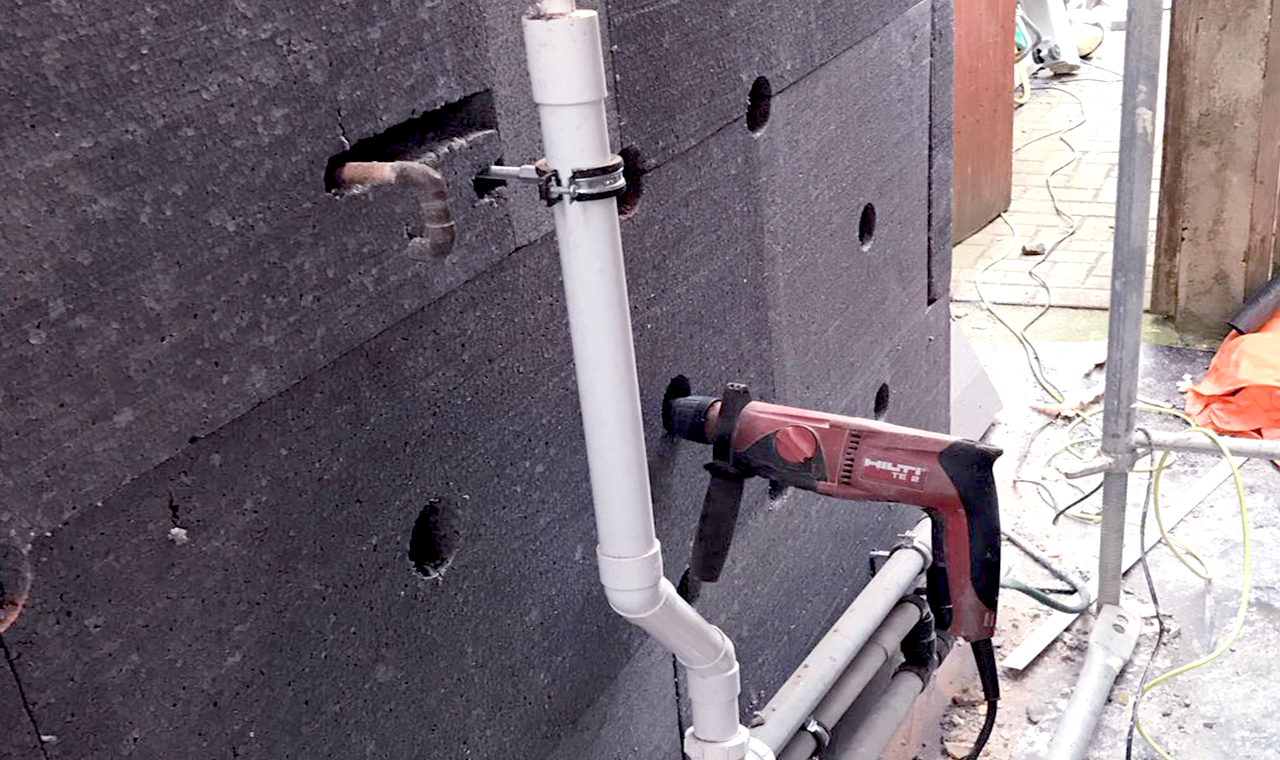
Burying soil pipes and downpipes
We recommend not burying any soil, waste, or downpipes. While it is possible to plant them in the insulation, numerous problems can arise when this is carried out. Firstly, if there are any leaks in the pipes, or you need to get to the pipes for any reason, you will have to hack through the render to reach them. There will be a vast amount of patching involved as a result and a high cost to make good the rendered surface. Undiscovered leaks can cause the wall to become damp and cause mould inside the home. Even if the pipes are okay, there is always the danger that someone could drill through the pipe in the future and damage it when they fit something else to the wall.
The easy answer is to ensure that whoever installs your insulation extends all plumbing, whatever the works involved. In some cases, it might be necessary to bury small bends or runs of pipe; in these cases, they should be marked and pointed out to the customer. Gas lines must be extended, as accidentally drilling into them could be very dangerous.
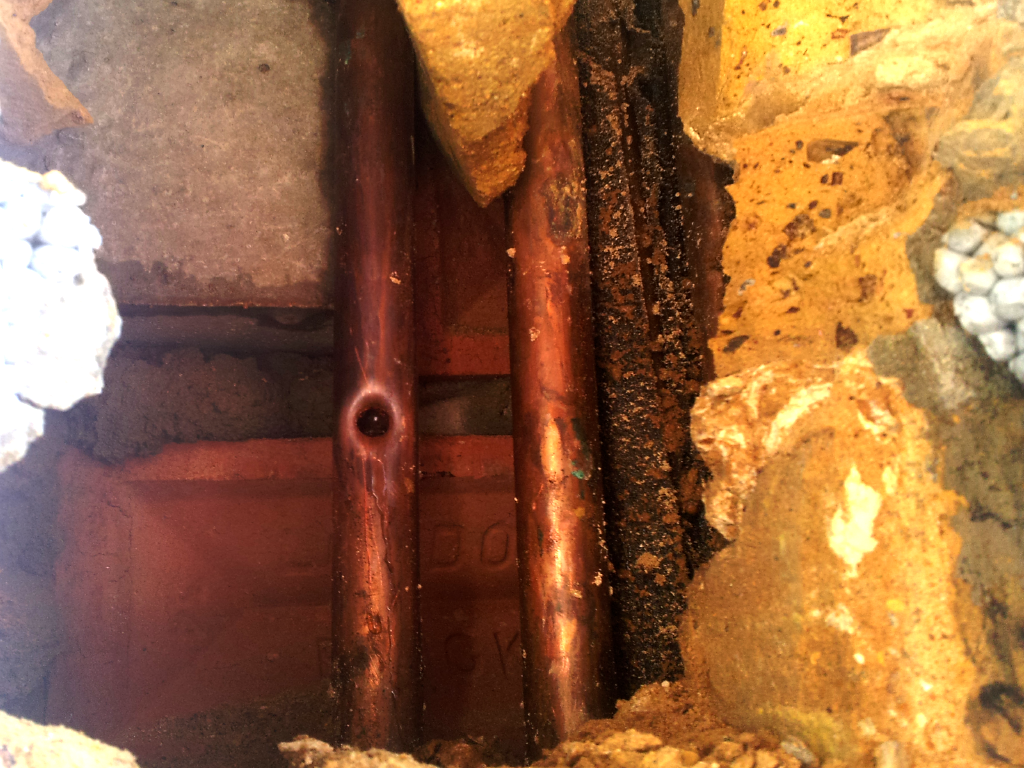 Burying cables in the insulation
Burying cables in the insulation
So if burying pipe work is a bad idea, what about cabling? There are two types of cables – electrical cables that carry a significant current and telecoms cables that do not. Power lines should never be buried because the insulation can cause them to overheat and thus pose a fire risk. Telephone and tv cables could technically be buried, which is the one type of cable that is sometimes offered to be buried for the customer.
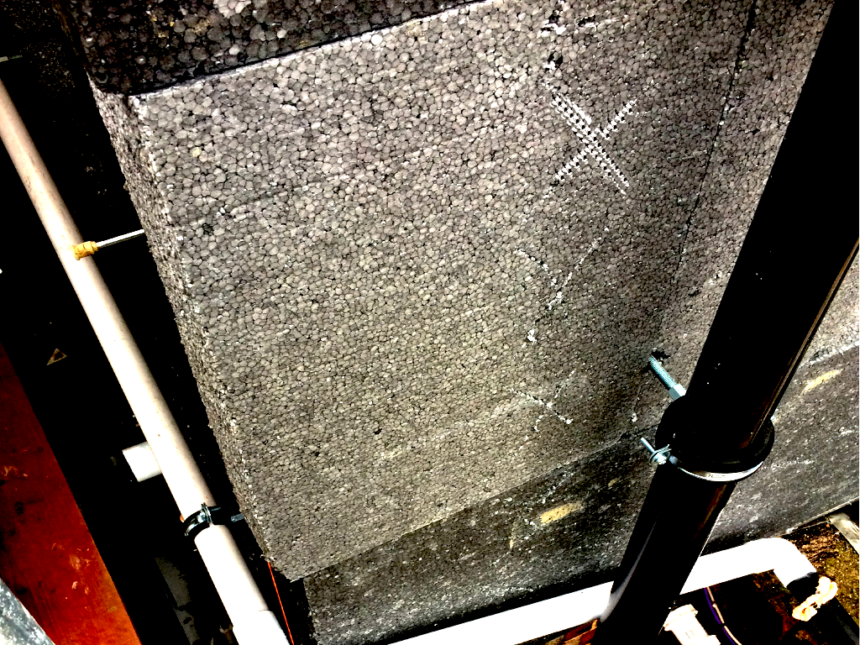
Why bury cables?
Some customers want their wall to look as tidy and clean as possible, with minimal cables showing on the wall. Thus it may be that the cables are buried in the insulation. This does not necessarily pose a problem, but you need to be aware of the following concerns:
- It is easy to drill through cables when fixing the insulation. As you can see in the photo above, you can score the EPS to show precisely where any pipes or cabling are and therefore avoid drilling a fixing into the cables.
- Cables could be damaged in the future. Even after the insulation work is done, the customer may wish to attach an item to the wall and damage the cables embedded in the insulation.
- The customer may need to reach the cables. Plumbing is not a big concern because you can always run a new pipe, but if you need to get to the cable, you are out of luck.
Chasing the cabling is the solution
If the customer is keen to hide the cables but not bury them in the insulation, the alternative is to use a plastic cover that will conceal the cabling on the wall. Chasing is very cheap and highly effective, although it doesn’t quite make for the clean wall that burying the cables does.

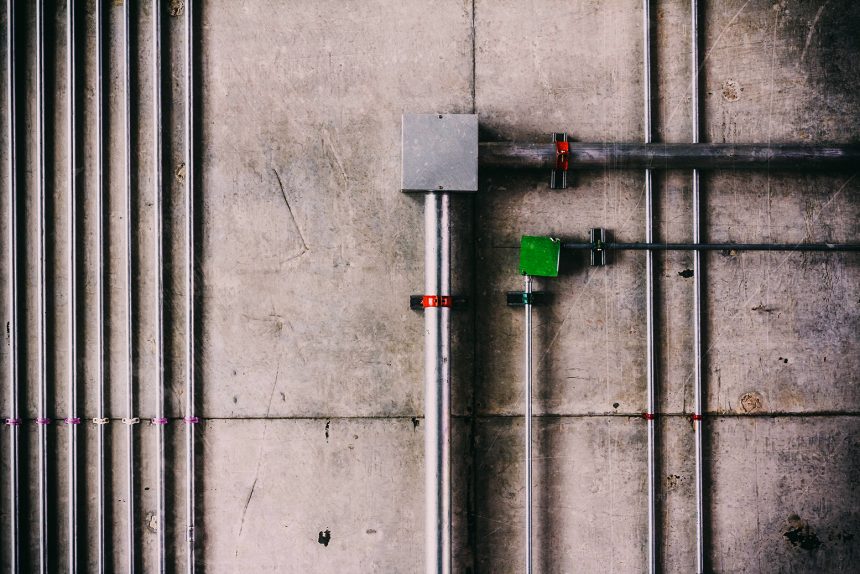
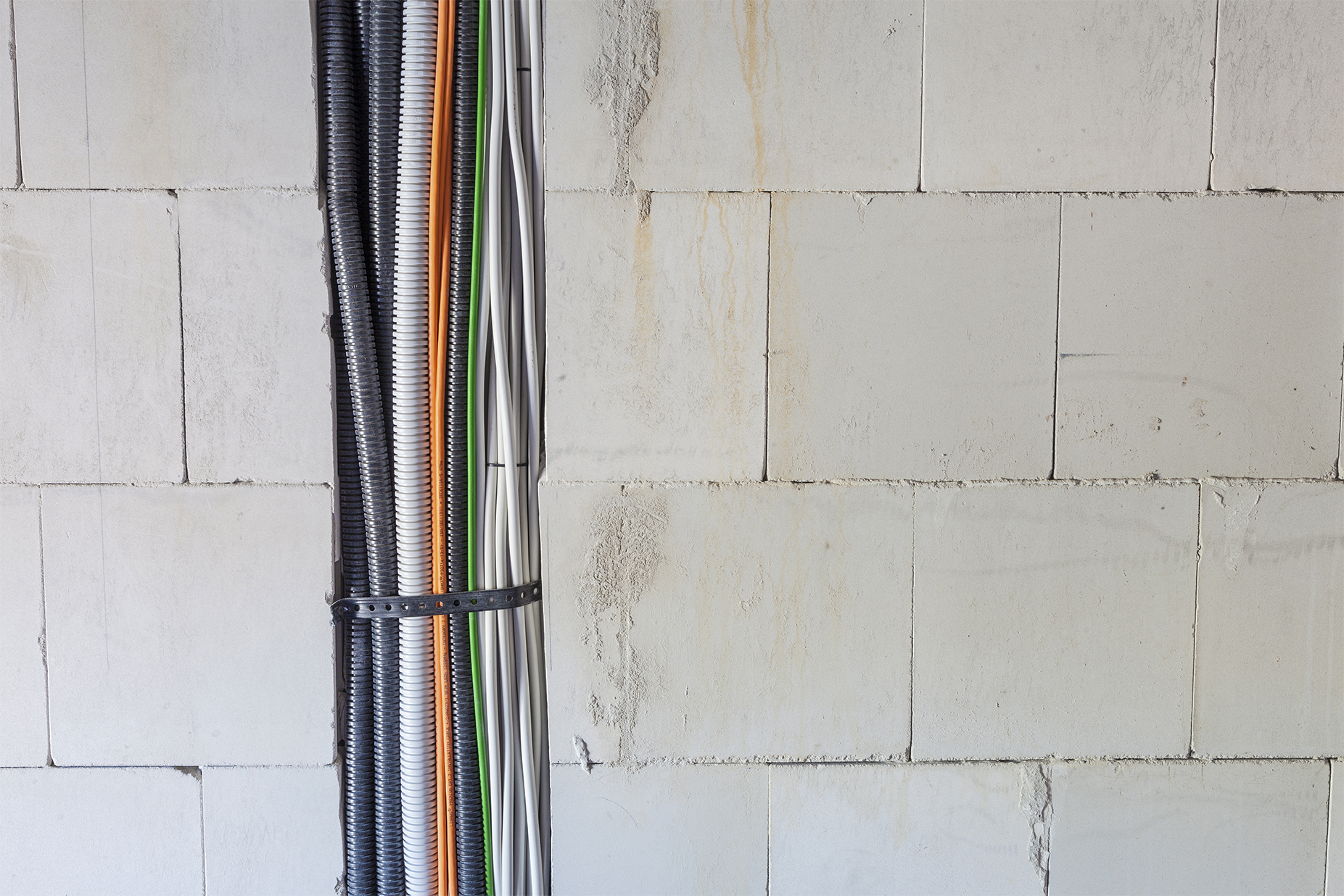













2 comments
twryehedncbzdgc
Should I go for EWI or treble glazing, I can only really afford one or the other.